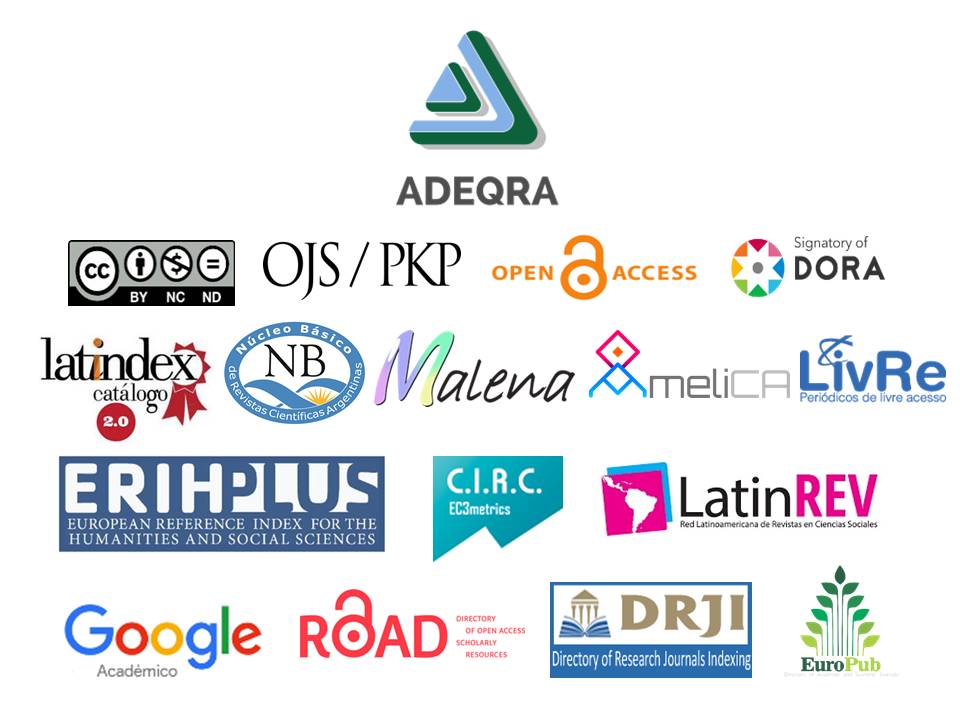The game in teaching the periodic law
Keywords:
periodic table, representations, gamesAbstract
Teaching Chemistry in high school implies certain difculties. This may be because Chemistry sometimes is too abstract for students and it is far away from their everyday life. In this way, students cannot establish new associations in order to build meaningful learnings. One example of this is the periodic law and its representation in the periodic table. This work presents a dissertation proposal. Its aim is to investigate the influence of different periodic law representations in building chemical periodicity knowledge, using a game as a strategy. Methodology used is known as design-based research. It allows focusing on learning processes through different iterative cycles. In addition, the work presents the results of the frst two iteration cycles.
References
Bensaude-Vincent, B. (2001). Graphic representations of the periodic system of chemical elements. En: U. Klein (ed.), Tools and Modes of Representation in the Laboratory Sciences (pp. 133-161). Kluwer Academic Publishers: Dordrecht, Holanda.
Bruner, J. S. (1984). Acción, pensamiento y lenguaje. Madrid: Alianza Editorial.
Carabelli, P. y Farré, A. S. (2017). Juguemos a la Tabla Periódica. Educación en la Química en Línea, 23(1 y 2), 105-116. Recuperado de: http://www.adeqra.com.ar/index.php/institucional/numerosanteriores/710-vol-23-n-1-y-2-2017
Carabelli, P., Farré, A. S. y Raviolo, A. (2019). ¿Qué estrategias didácticas se han publicado en español y portugués para enseñar tabla periódica? III Encuentro de Investigadores en Enseñanza de las Ciencias (III EIEC), 19 y 29 de septiembre 2019.
Easterday, M. W., Rees Lewis, D. G. y Gerber, E. M. (2018). The logic of design research. Learning: Research and Practice, 4(2), 131-160. https://doi.org/10.1080/23735082.2017.1286367
Estany, A., e Izquierdo Aymerich, M. (2001). Didactología: Una ciencia de diseño. ÉNDOXA, 14, 13-33. https://doi.org/10.5944/endoxa.14.2001.5015
Franco-Mariscal, A. J. Oliva-Martínez, J. M. y Almoraima-Gil, M. L. (2015). Students’ Perceptions about the Use of Educational Games as a Tool for Teaching the Periodic Table of Elements at the High School Level. Journal of Chemical Education, 92(2), 278-285. https://doi.org/10.1021/ed4003578
Franco-Mariscal, A. J., Oliva-Martínez, J. M. (2012). Difcultades de comprensión de nociones relativas a la clasifcación periódica de los elementos químicos: La opinión de profesores e investigadores en educación química. Revista científca, 16(2), 53-71.
Franco-Mariscal, A. J., Oliva-Martínez, J. M., y Bernal-Márquez, S. (2012a). Una revisión bibliográfca sobre el papel de los juegos didácticos en el estudio de los elementos químicos: Primera parte: los juegos al servicio del conocimiento de la Tabla Periódica. Educación química, 23(3), 338-345. http://dx.doi.org/10.1016/S0187-893X(17)30118-0
Franco-Mariscal, A. J., Oliva-Martínez, J. M., y Bernal-Márquez, S. (2012b). Una revisión bibliográfca sobre el papel de los juegos didácticos en el estudio de los elementos químicos: Segunda parte:los juegos al servicio de la comprensión y uso de la tabla periódica. Educación química, 23(4), 474-481. http://dx.doi.org/10.1016/S0187-893X(17)30135-0
Fumagalli, L. (Coord.) (2000). Libro de actividades. Química. Estructura, propiedades y transformaciones de la materia. Ed. Estrada: Buenos Aires.
Kim, S., Song, K., Lockee, B. y Burton, J. (2018). Gamifcation in Learning and Education. Enjoy Learning like Gaming. Springer International Publishing: Suiza.
Messeder Neto, H. S. y Moradillo, E. F. (2017). O jogo no ensino de química e a mobilização da atenção e da emoção na apropriação do conteúdo científco: aportes da psicologia histórico-cultural. Ciência y Educação (Bauru), 23(2), 523-540. https://doi.org/10.1590/1516-731320170020015
Mokiwa, H. O. (2017) Reflections on Teaching Periodic Table Concepts: A Case Study of Selected Schools in South Africa. EURASIA Journal of Mathematics Science and Technology Education, 13 (6), 1563-1573. https://doi.org/10.12973/eurasia.2017.00685a
Pérez-Echeverría, M. P., Martí, E. y Pozo, J. I. (2010). Los sistemas externos de representación como herramientas de la mente. Cultura y Educación, 22(2), 133-147. https://doi.org/10.1174/113564010791304519
Prediger, S., Gravemeijer, K. y Confrey, J. (2015). Design research with a focus on learning processes: an overview on achievements and challenges. ZDM Mathematics Education, 47(6), 877–89. https://doi.org/10.1007/s11858-015-0722-3
Ritter, O. M. S, da Cunha, M. B. y Stanzani, E. L. (2017). Discutindo a classifcação periódica dos elementos e a elaboração de uma tabela periódica interativa. ACTIO. Docência em Ciências, 2(1), 359-375.https://doi.org/10.3895/actio.v2n1.6782
Sarlé, P. M. (2006). Enseñar el juego y jugar la enseñanza. Buenos Aires: Paidós.
Scerri, E. (2008). El pasado y el futuro de la tabla periódica: Este fel símbolo del campo de la química siempre encara el escrutinio y el debate. Educación química, 19(3), 234-241. Recuperado de: http://www.journals.unam.mx/index.php/req/article/view/25837
Schnotz, W., y Kürschner, C. (2008). External and internal representations in the acquisition and use of knowledge: visualization effects on mental model construction. Instructional Science, 36(3), 175-190. https://doi.org/10.1007/s11251-007-9029-2
Soares, M. H. F. B. (2016). Jogos e atividades lúdicas no ensino de química: Uma discussão teórica necessária para novos avanços. REDEQUIM. Revista Debates em Ensino de Química, 2(2), 5-13. Recuperado de: http://www.journals.ufrpe.br/index.php/REDEQUIM/article/view/1311
Vygotsky, Lev S (1978). Pensamiento y lenguaje. Madrid: Paidós.
Published
How to Cite
Issue
Section
License
Copyright (c) 2020 Patricia Carabelli, Andrea S. Farré, Andrés Raviolo

This work is licensed under a Creative Commons Attribution-NonCommercial-NoDerivatives 4.0 International License.



